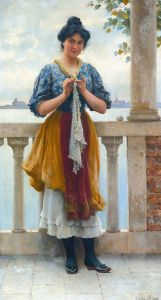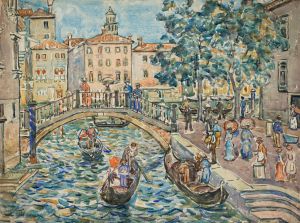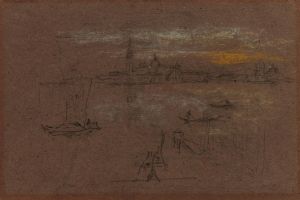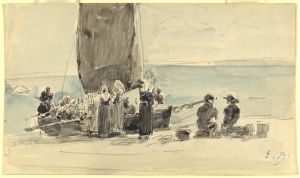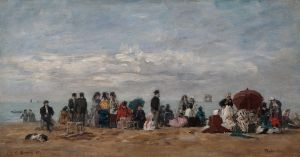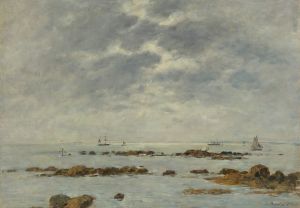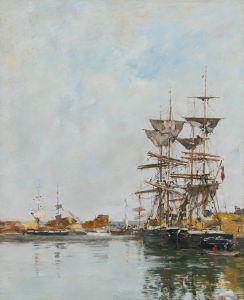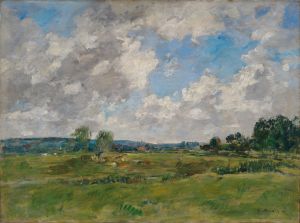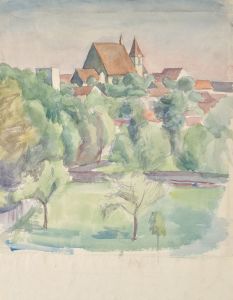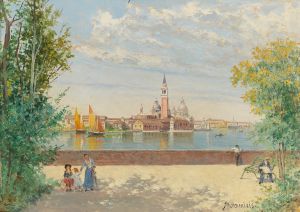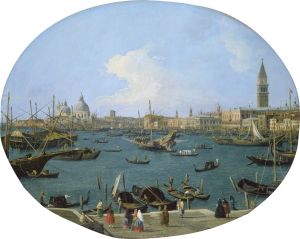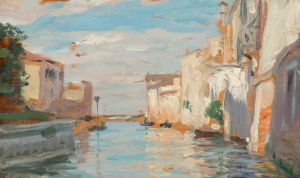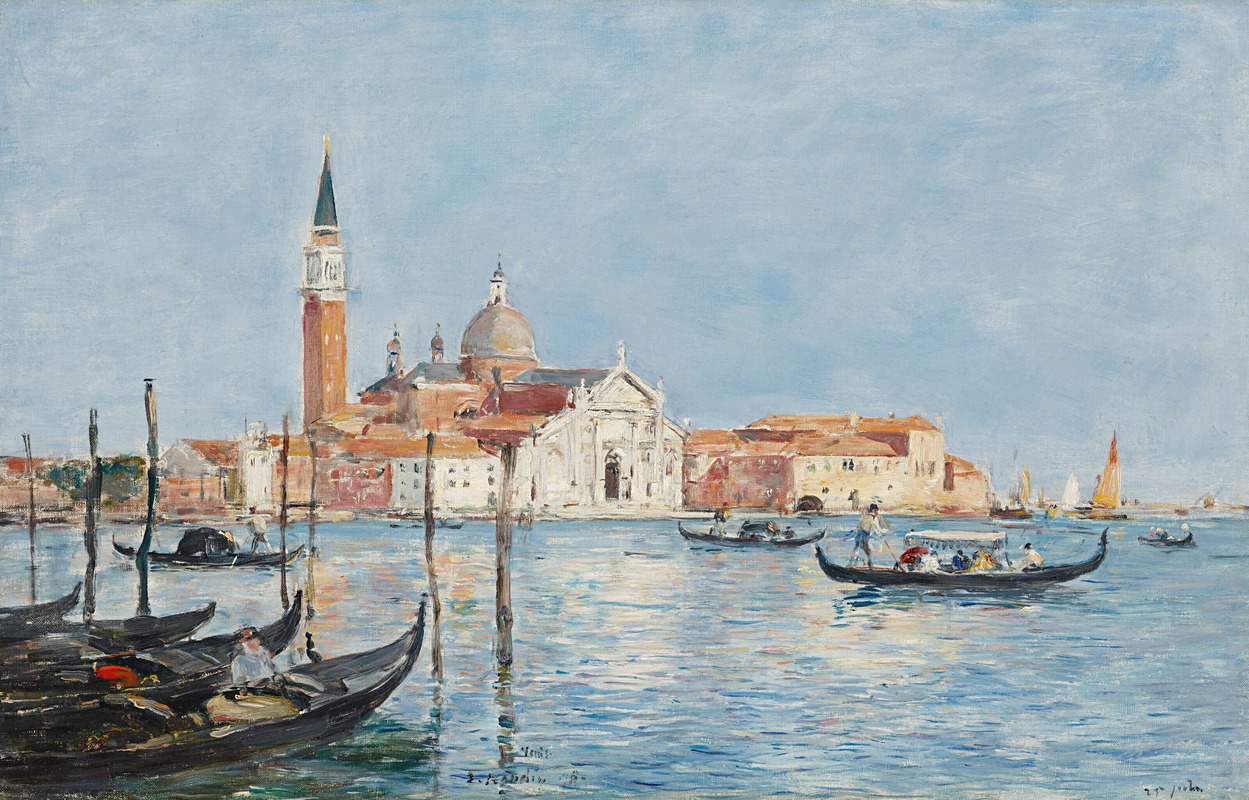
Venise, église San Giorgio
A hand-painted replica of Eugène Boudin’s masterpiece Venise, église San Giorgio, meticulously crafted by professional artists to capture the true essence of the original. Each piece is created with museum-quality canvas and rare mineral pigments, carefully painted by experienced artists with delicate brushstrokes and rich, layered colors to perfectly recreate the texture of the original artwork. Unlike machine-printed reproductions, this hand-painted version brings the painting to life, infused with the artist’s emotions and skill in every stroke. Whether for personal collection or home decoration, it instantly elevates the artistic atmosphere of any space.
Eugène Boudin's painting Venise, église San Giorgio (translated as Venice, Church of San Giorgio) is a work by the renowned French artist, who is often regarded as one of the precursors of Impressionism. Boudin, born in 1824 in Honfleur, France, was celebrated for his ability to capture the interplay of light and atmosphere in his landscapes and seascapes. His works often depicted coastal scenes, harbors, and the skies, which he considered the "chief organ of sentiment."
This particular painting, Venise, église San Giorgio, portrays the Church of San Giorgio Maggiore, a prominent landmark in Venice, Italy. The church, located on the island of San Giorgio Maggiore, is an iconic example of Renaissance architecture, designed by Andrea Palladio in the 16th century. Its striking white marble facade and the surrounding waters of the Venetian lagoon have made it a popular subject for artists over the centuries.
Boudin painted this work during one of his visits to Venice, a city that captivated many 19th-century artists with its unique light, architecture, and reflections on the water. In this painting, Boudin employs his characteristic loose brushwork and attention to atmospheric effects to depict the serene beauty of the Venetian lagoon. The composition likely includes the church's recognizable features, such as its grand facade and bell tower, set against the shimmering waters and sky.
As with many of Boudin's works, the painting reflects his fascination with the transient effects of light and weather. His ability to render these fleeting moments with subtlety and precision influenced later Impressionist painters, including Claude Monet, who admired Boudin's work and considered him a mentor.
The exact date of creation for Venise, église San Giorgio is not definitively documented, but it is consistent with Boudin's travels to Italy in the 1890s. During this period, he produced numerous works depicting Venetian scenes, showcasing his mastery of capturing the city's luminous and reflective qualities.
Today, Boudin's works, including his Venetian scenes, are held in high regard and can be found in major art collections and museums worldwide. His contributions to the development of modern landscape painting and his role as a forerunner of Impressionism have solidified his place in art history.
Further details about the specific location of this painting or its current ownership are not readily available.





